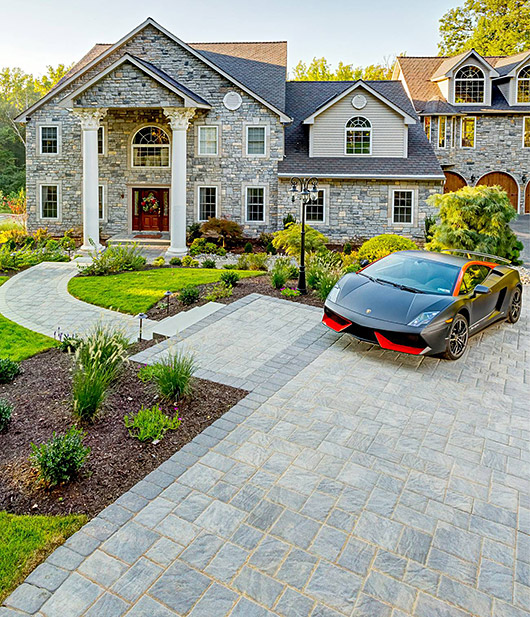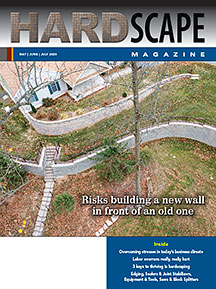Contractor Stories
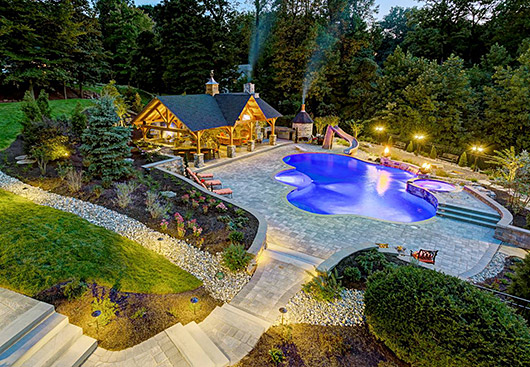
Don’t grow bigger; get better (February/March 2016)
Earth, Turf & Wood has the infrastructure to grow, but instead puts their efforts into becoming better at what they do.
By Tom HatlenThis article is part 2 of our story on Jarod Hynson’s company, Earth, Turf & Wood. You can read part 1 on job costing and overhead recovery in our December/January 2016 issue.
“He has the systems in place and the professionalism in his company that he could grow his business 3 times larger if he wanted to.” That’s how business management consultant Marcus vandeVliet characterized Earth, Turf & Wood’s potential.
But, Jarod doesn’t want to grow the company much beyond its current size. “I've studied a lot of design/build companies around the country. I’ve been to $5-, $10-, $15-million landscape companies, and a lot of owners say, ‘I wish I had stopped where you are because that’s when I was most profitable. But now I can’t go back because I have all this overhead and I have a beast that I have to feed continually.’”
How big is Earth, Turf & Wood? Without going into annual sales, we can tell you the company has 13 people: Jarod, a Registered Landscape Architect, an Operations Manager, an Administrative Assistant and 3 Project Managers that run 3 installation crews.
Profile
Earth, Turf & Wood Inc.
Denver, PAFounded 2000
Jarod Hynson, President
Customer base
100% ResidentialServices
60% Hardscape35% Landscaping/lighting
5% Property care
Largest project
$1.3 MillionAnnual sales
ConfidentialEmployees
13Narrow niche limits growth
While the systems and professionalism are there, Marcus says growing the company much larger would pose sizeable challenges that would be hard to overcome. Much of this has to do with the narrow niche they serve extraordinarily well.Jarod says Earth, Turf & Wood serves high-end residential design/build clients with an average project size over $100,000. “We have a very select type of client. We build projects so that when it’s done the client is going to walk out in the backyard and say, ‘This is beyond anything that I imagined.’ That is what we are very good at.”
They screen potential clients heavily so they don’t waste their time on price shoppers or on projects outside the scope of what they do. “Somebody once told me that you get to your first million dollars in sales by saying ‘yes’ to everybody and you get to your second by saying ‘no.’ That's what we've done.”
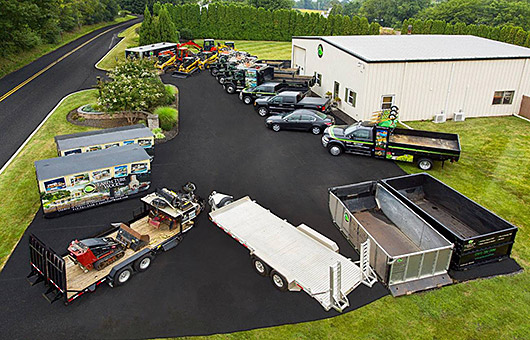
Jarod is a big advocate for tracked loaders. “We went to track machines 7 or 8 years ago and we will never go back to wheeled machines. You lose so much production time in inclement weather. Yes, tracked loaders cost more and they are a little more maintenance, but we can go right out and continue to work through muddy conditions with track machines.”
Refine it, perfect it; get better and better
They say “no” a lot because they won’t stray from their niche. And why should they? They’re profitable. They have enough work on the line that they’re scheduled out months in advance. They’re in such demand that their sales never went down during the great recession.
The book, Never Eat Alone by Keith Ferrazzi has made an impression on Jarod. He says, “I make a point of having lunch with at least 3 people a week whether they're other business owners, clients or friends. My radar's constantly up as to who's doing what in the area and where, and is there an opportunity for us to be involved.”
Jarod explains his niche philosophy. “I'm a huge advocate of focusing on what you're good at and continuing to refine it, perfect it and just get better and better at what you do.”
Here are some of the things he’s done to gear his company to be successful in the high-end residential niche.
Use a design process that delivers
Clients receive a 35-page “Dream Builder” workbook that Registered Landscape Architect Mary Dresser walks them through to determine what they want/need. Jarod says, “We spent years developing it. When we put it down in front of our potential client they know we're serious. Our design process is very involved and takes several months. 9 out of 10 clients are blown away by the final result.”While the design phase is time-consuming, Jarod says a number of things combine to allow Mary to double the industry average for residential Registered Landscape Architect annual sales:
- Their reputation brings in a steady flow of new work.
- They screen potential clients well so Mary’s time isn’t wasted.
- They build large projects, some upwards of $1 million.
- And, Jarod adds, “Mary is very, very good at what she does.”
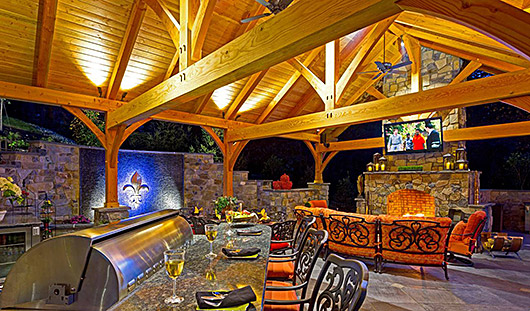
Hire the best
“We go out and we hire the best, the absolute best,” explains Jarod. “With these types of projects we cannot go after the cheapest unskilled laborer in the field; it just does not work.”Marcus adds, “His people are all superstars. His project managers are cross-trained. They're very quality conscious. They communicate effectively. They're very professional and provide a great experience for the customer.”
Trust but verify
They do criminal background checks and random drug testing of employees, and don’t allow smoking on job sites. Jarod says, “I tell my clients: I've got 3 small children of my own. I would never put an employee in your backyard that I wouldn't put out in my backyard with my own kids. I will not do it. My clients really respect that, and it's a pride thing amongst our guys. They will tell a new hire, ‘Look, this is who we are and this is how it is. You either adapt or you're gone.’” Look the part
Field employees wear khaki pants with company shirts tucked in. The trucks are all black with professional graphics, and are washed daily. The tires are Armor-All-ed. Jarod says, “Our trucks stand out, and people notice those things in the area. We only have 5 trucks, but people say to me all the time, ‘I see your trucks all over the place.’” Know thy numbers
Tenacious and detailed job costing/overhead recovery systems have given them great confidence in the accuracy of their estimating and pricing of high dollar jobs. (See December/January 2016 issue, page 10 article.)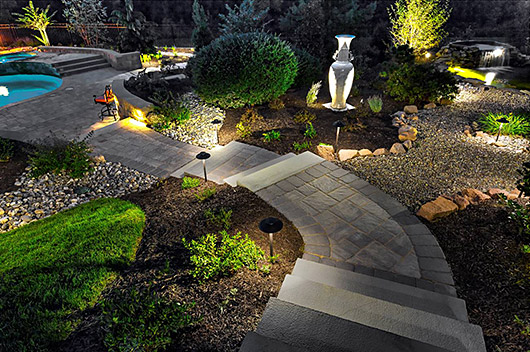
More growth challenges
Many of those things listed above have allowed Jarod to grow the company within its existing framework, but Marcus says it would be very difficult to go much beyond that and still provide their consistently high level of service, expertise and quality control. For starters, they would either need to begin traveling a couple hours out or they would need satellite branches.Growth would also mean adding people. Marcus says a lot of contractors try to grow their companies by just adding more crews. "Then suddenly you're not spending as much time with potential clients. You're not maintaining relationships. You're not spending as much time on quality control and being involved in all the projects because now you're spread that much thinner.”
Finding the exceptional people the company would require to expand might be the biggest roadblock. Marcus says, “There just aren't that many qualified, experienced people that can both do that job, but also fit into the culture of Earth, Turf & Wood.”
Foremen are Project Managers
Earth, Turf & Wood’s 3 foremen truly are Project Managers. Jarod explains, “Our crews are almost individual companies run within our company. We have meetings before and during the projects, but from a day-to-day operation standpoint our Project Managers make a lot of their own decisions. For example, we don’t make weather calls for the day; the Project Managers do. It all comes back to our incentive-based compensation at the end of the project.“I'm a firm believer of hiring the right people and building them up. I encourage them and get out of their way so that they can bring to the company things that I can't.”
Jarod runs the rest of the company the same way. “All the scheduling, the basic estimating, the proposals and the design work are done by other people in my company. I'm very hands-off internally.”
